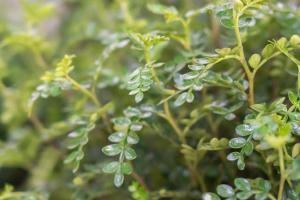What to Do with Your Potted Plants After Summer
With the end of summer quickly approaching, it’s time to start thinking about what to do with your potted plants. As the temperatures begin to drop and the days become shorter, it’s important to take some steps to ensure the health and longevity of your plants.
Bring Indoors or Keep Outdoors?
One of the first things to consider is whether to bring your potted plants indoors for the colder months or to leave them outside. The decision often depends on the type of plant and the climate where you live. For tropical plants that cannot tolerate the cold, it’s best to bring them inside. For hardier plants that can withstand colder temperatures, you may have the option to keep them outdoors. Before making a decision, research the specific needs of your plants and talk to a local gardening expert for advice.
Trim and Prune
Before you bring your plants inside or prepare them for winter, it’s a good idea to trim and prune them. This will help them adapt to their new environment and encourage healthy growth. Remove any dead or diseased leaves, cut back any overgrown branches, and remove any pests that may be living on the plant. It’s also a good idea to give plants a light pruning to promote new growth and encourage a fuller shape.
Repot Your Plants
If your potted plants have grown too big for their current containers, it’s a good idea to repot them. This will give the plant more room to grow and prevent it from becoming root-bound. Choose a pot that is slightly larger than the current one and be sure to use a high-quality potting mix. When repotting, be sure to loosen the roots and remove any dead or damaged ones. Water the plant thoroughly after repotting to promote healthy growth.
Protect Your Plants
If you decide to leave your potted plants outside for the winter, it’s important to protect them from the elements. This may include wrapping the pot in insulation or burlap to prevent the roots from freezing, or moving the plant to a protected area such as a covered porch or garage. It’s also a good idea to cover the plant with a frost cloth on nights when temperatures are expected to dip below freezing.
Provide Adequate Lighting
If you decide to bring your plants indoors for the winter, it’s important to provide them with adequate lighting. Most plants need at least six hours of sunlight each day, so be sure to place them near a sunny window. If your home does not have many windows, consider using grow lights to provide the necessary light. Be sure to adjust the height of the lights as the plant grows to ensure the proper amount of light is reaching the plant.
Conclusion
With a little care and attention, your potted plants can thrive throughout the winter months. Consider the specific needs of each plant and take the necessary steps to ensure its health and longevity. Whether you decide to bring your plants indoors or keep them outside, be sure to protect them from the elements and provide them with adequate lighting. By following these simple tips, your potted plants will continue to bring beauty and joy into your home for years to come.

 how many times do yo...
how many times do yo... how many planted tre...
how many planted tre... how many pine trees ...
how many pine trees ... how many pecan trees...
how many pecan trees... how many plants comp...
how many plants comp... how many plants can ...
how many plants can ... how many plants and ...
how many plants and ... how many pepper plan...
how many pepper plan...
































